[Ad-Oracle-Sql] 9. Functions
Categories: Ad-Oracle-Sql
Tags: Functions
📋 This is my note-taking from what I learned in the class “Advanced Database Concepts”
Objective
- Functions
- Creating a stored function
- Using OUT parameters in functions
- Including multiple RETURN statements in a function
- Using a RETURN statement in a procedure
- Using constraints of actual and formal parameters
- Understanding and controlling how parameter values are passed
- Working with function purity levels
- Additional program unit options
- Referencing the data dictionary for program units
- Deleting program units
Brewbean’s Challenge
Need program module to check a user login
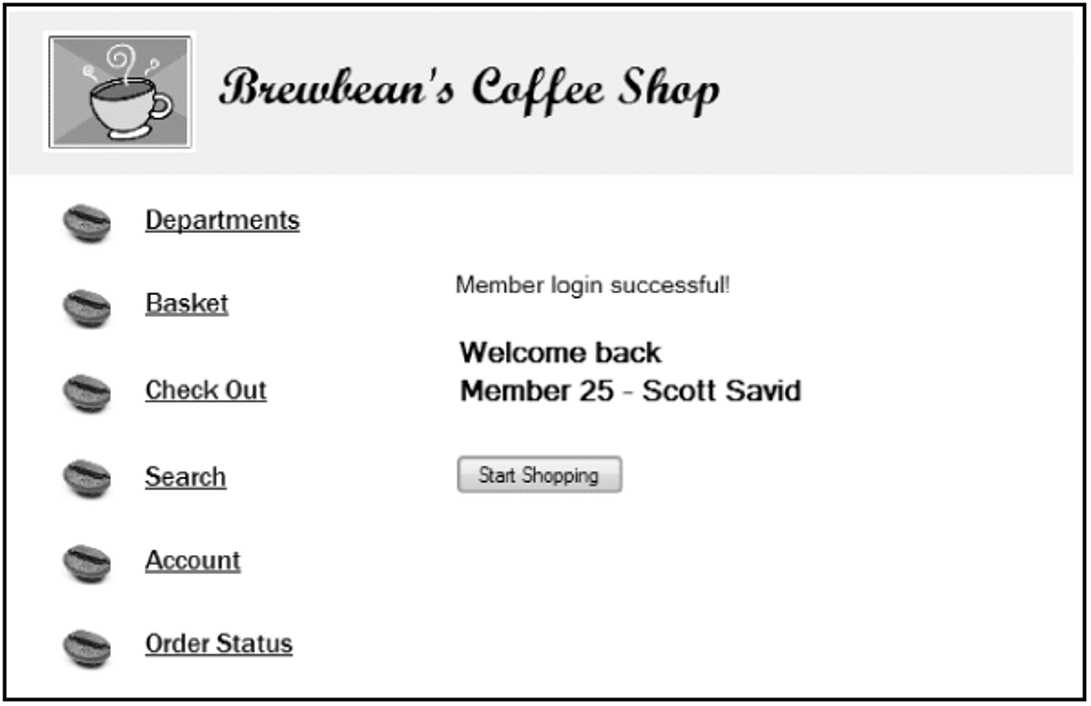
Need program module to calculate shipping cost based on the number of items in the basket
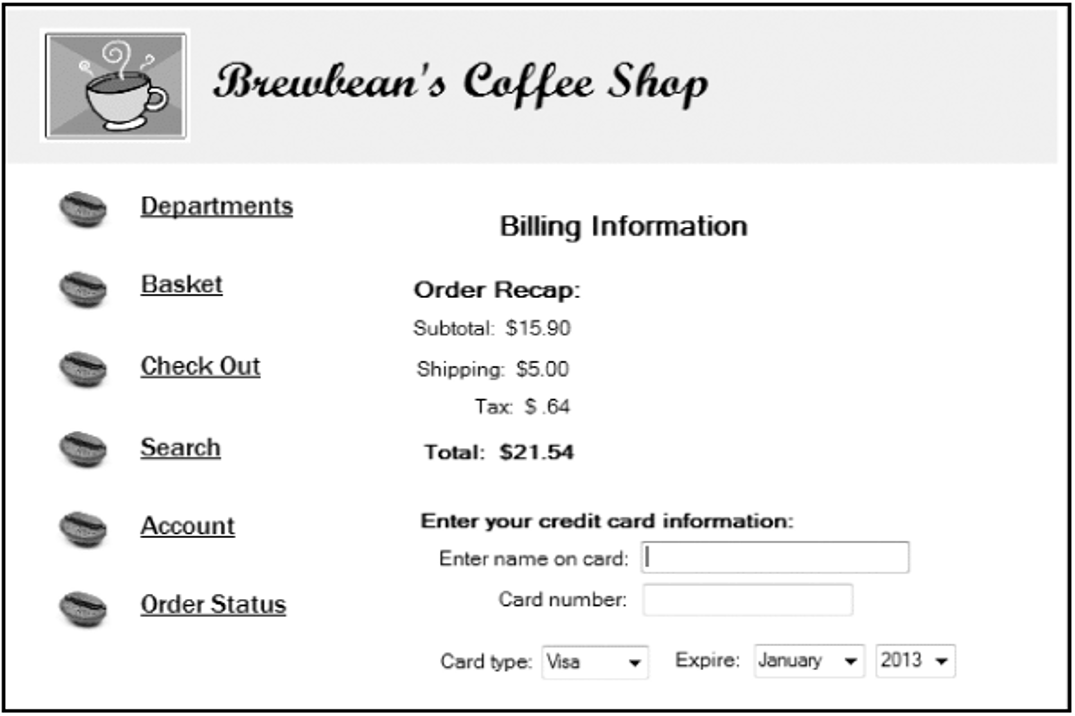
Introduction to Functions
- A function is similar to a procedure in that it can accomplish a task and retrieve/return values
- A function is part of an expression, not an entire statement such as a procedure
- Can be used in both
PL/SQLandSQL statements - Same as Oracle-supplied functions (ROUND, TO_CHAR)
- Contains a RETURN statement
Example of Oracle-Supplied Function
SQL
SELECT idProduct, price, ROUND(price, 0)
FROM bb_product
WHERE idProduct < 4;
PL/SQL
DECLARE
v_amt1 NUMBER(5,2);
v_amt2 NUMBER(3,0);
BEGIN
v_amt1 := 32.50;
v_amt2 := ROUND(v_amt1,0);
DBMS_OUTPUT.PUT_LINE(v_amt2);
END;
Function Create Statement
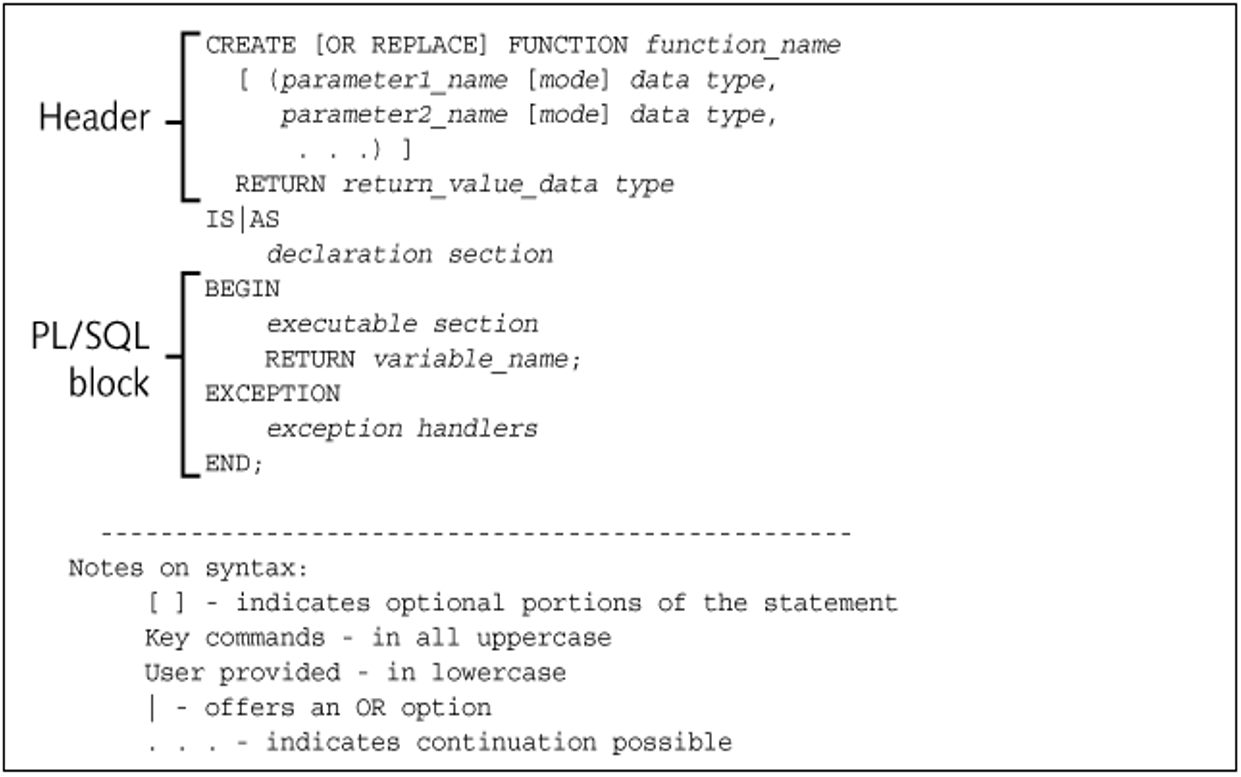
Function Example
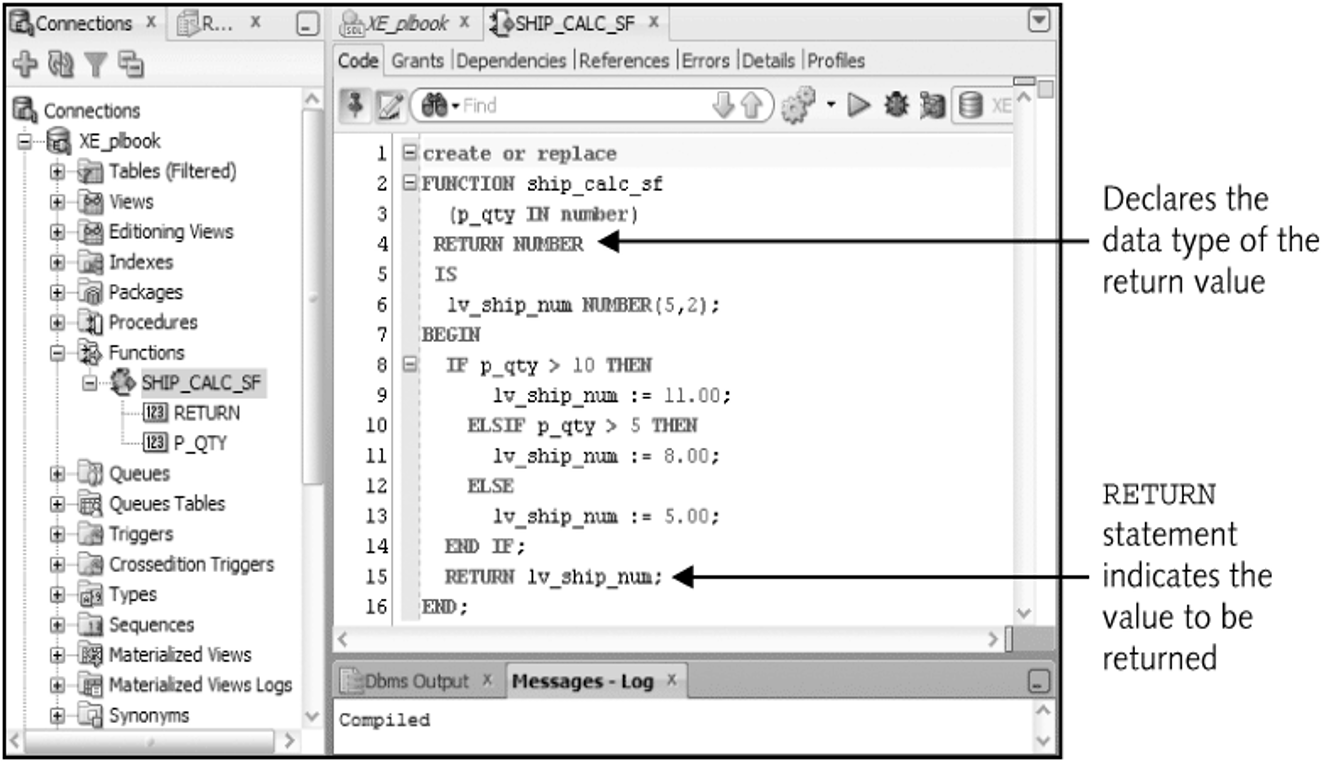
Invoking a Function from a Block
An assignment statement is used – a function RETURNS a value!
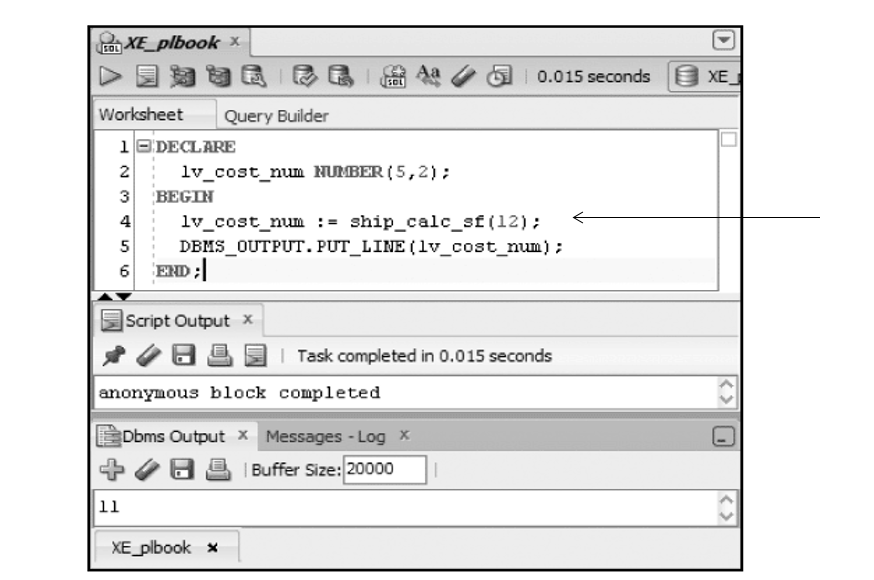
Attempt to Invoke Stand-alone
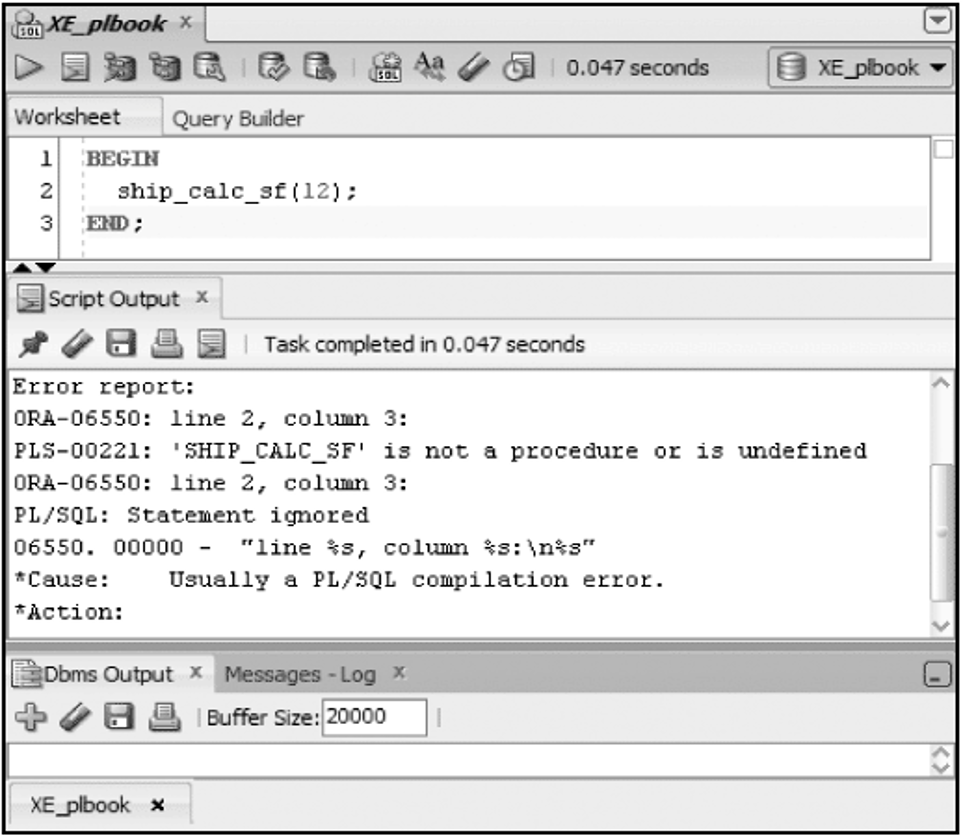
Use Function in SQL
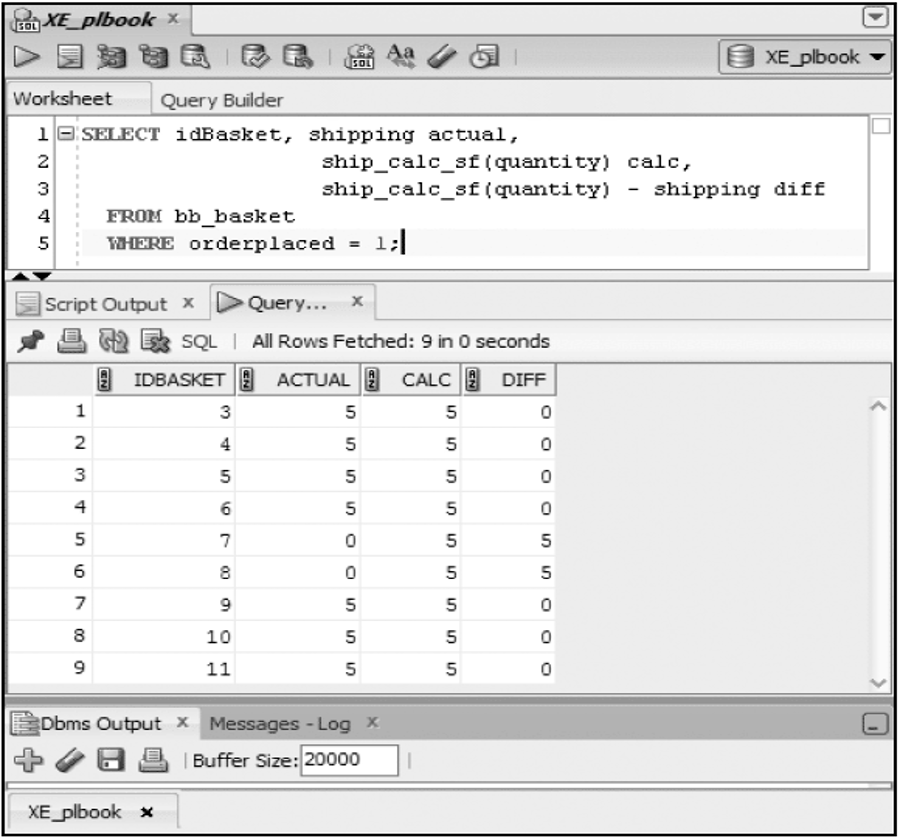
Brewbean’s Member Display
CREATE OR REPLACE FUNCTION memfmt1_sf
(p_id IN NUMBER,
p_first IN VARCHAR2,
p_last IN VARCHAR2)
RETURN VARCHAR2
IS
lv_mem_txt VARCHAR2(35);
BEGIN
lv_mem_txt := 'Member ' || p_id || ' - ' || p_first || ' ' || p_last;
RETURN lv_mem_txt;
END;
Member Display Test
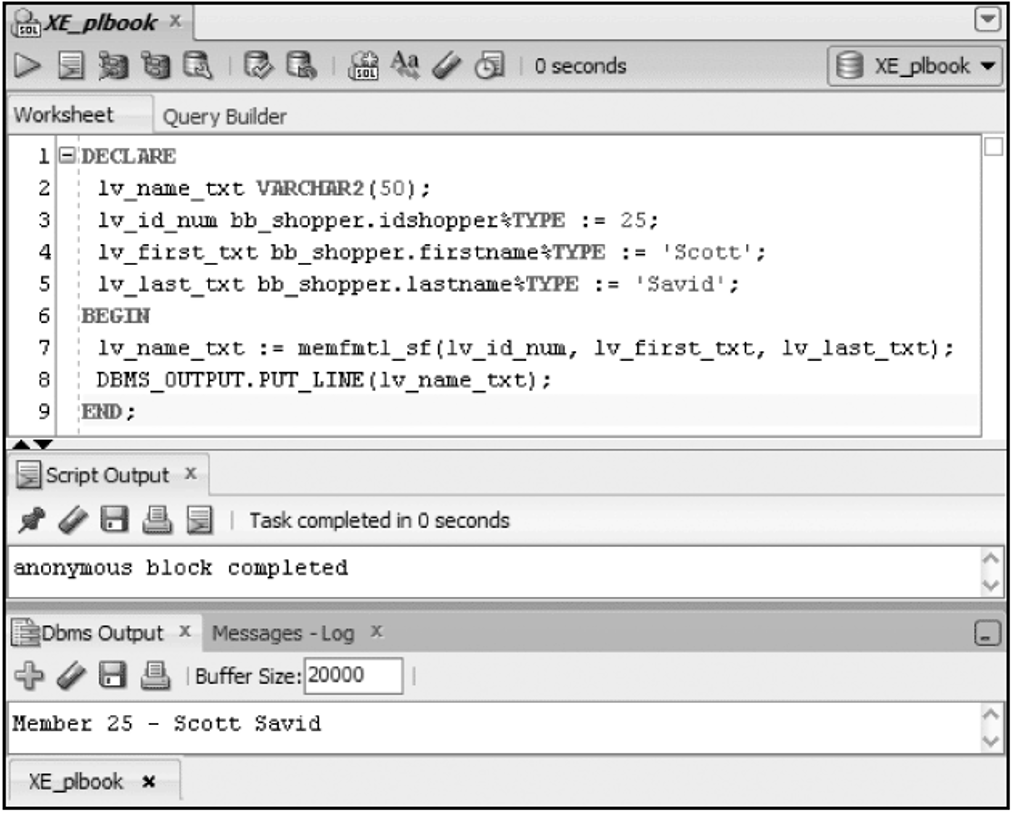
Using OUT Mode in a Function
OUT parameters are not typically used in functions, as:
- Mixing OUT and RETURN values can lead to confusion
- It prohibits the function from being used in SQL
Multiple RETURN Statements
Note: Only one RETURN statement can execute
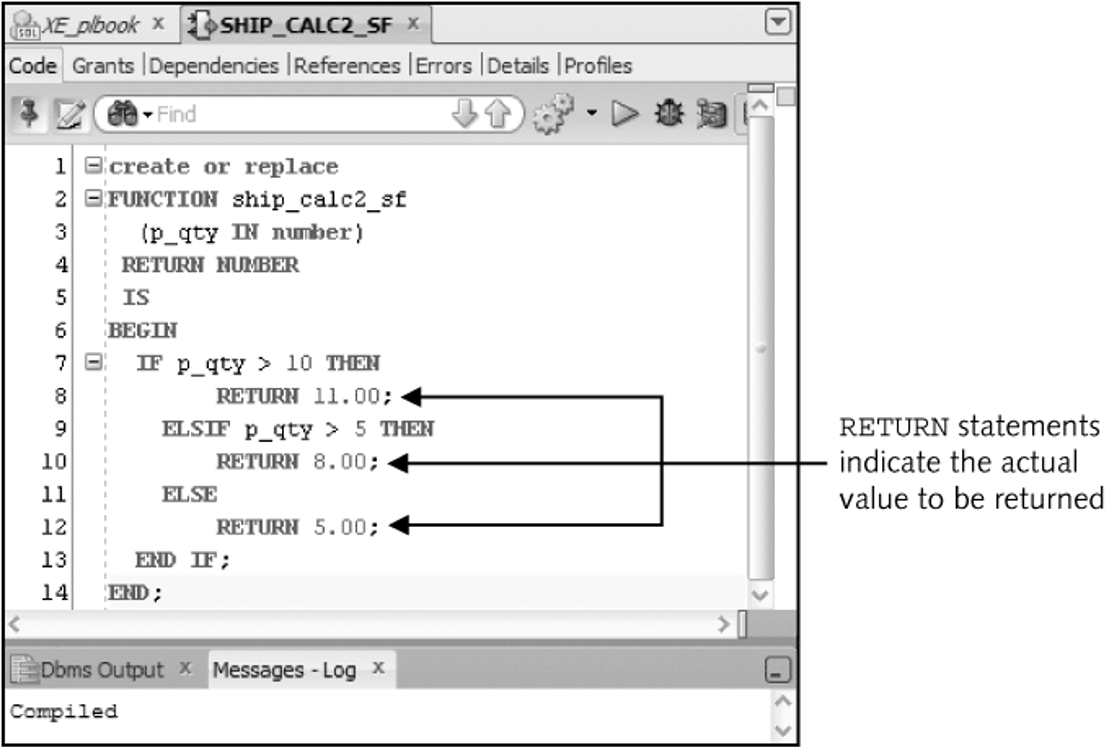
RETURN Statement in a Procedure
- Different purpose than a RETURN statement in a function
- Used to change flow of execution
- Stop processing in that block and move to the next statement after procedure call
- Stand-alone statement with no arguments
Parameter Constraints
- Formal parameters - Included in a program unit
- Actual parameters - Arguments used in a program unit call
- Argument for an OUT parameter must be a variable to hold the value returned
- Actual parameters determine the size of the formal parameters
Passing Parameter Values
-
- Two techniques used to pass values between actual and formal parameters:
-
- Passed by Reference - Create pointer to value in the actual parameter
-
- Passed by Value - Copies value from actual to formal parameter
- Pass by value is the default
- Use a compiler hint to use pass by reference
Pass by Reference
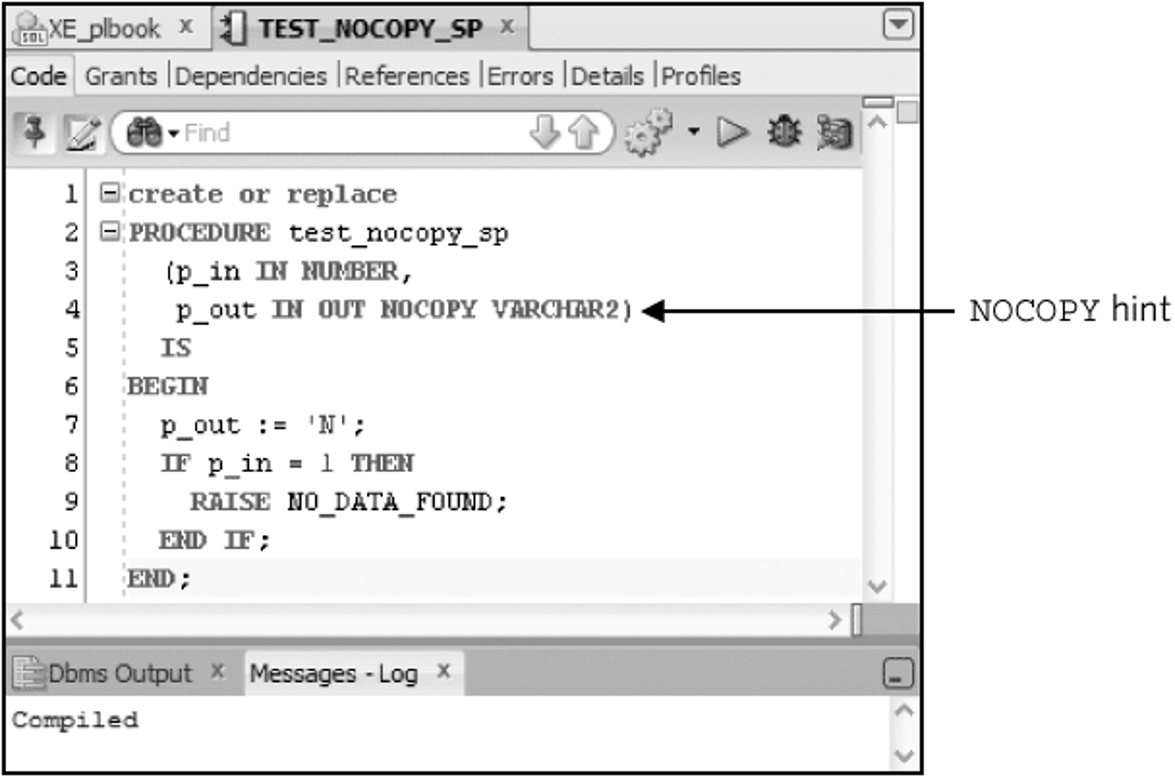
Purity Levels
Restrictions on functions used in SQL
-
- Functions cannot modify any tables in Oracle8 and prior versions
- Beginning with Oracle8i, the function cannot modify a table used in the SQL statement that calls the function; however, it may alter other tables if called from a non-select statement
- If used in a remote or parallel operation, no reading or writing of packaged variables allowed
- If used in a SELECT, VALUES, or SET clause, the function can write values to packaged variables; otherwise, it is not allowed
- Functions cannot be used in a check constraint or as a default value of a table column
- If the function calls other subprograms, the subprograms cannot break these rules
- Must be a stored database object (or in a stored package)
- Can use only IN parameters
- Must be a row function (not a group function)
- Formal parameter data types must use database data types (no PL/SQL data types such as BOOLEAN are permitted)
- Return data types must be a database data type
- Must not issue transaction control statements to end the current transaction prior to execution
- Cannot issue ALTER SESSION or ALTER SYSTEM commands
| Level Acronym | Level Name | Level Description |
|---|---|---|
| WNDS | Writes No Database State | Function does not modify any database tables (No DML) |
| RNDS | Reads No Database State | Function does not read any tables (No select) |
| WNPS | Writes No Package State | Function does not modify any packaged variables (packaged variables are variables declared in a package specification) |
| RNPS | Reads No Package State | Function does not read any packaged variables |
Purity Levels Test
Function that updates table bb_test1:
CREATE OR REPLACE FUNCTION fct_test1_sf
(p_num IN NUMBER)
RETURN NUMBER
IS
BEGIN
UPDATE bb_test1
SET col1 = p_num;
RETURN p_num;
END;
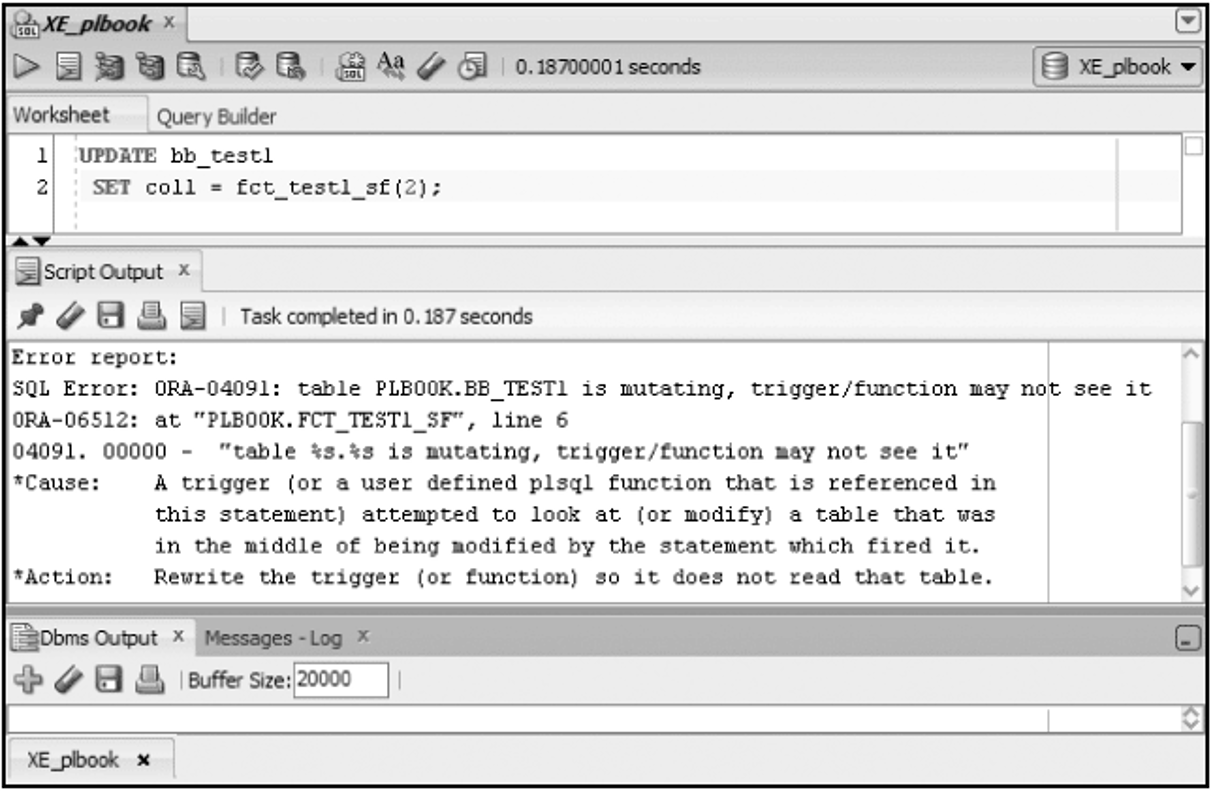
Additional Options
| Option | Description |
|---|---|
| DETERMINISTIC | Allows the Oracle system to use a saved copy of a function’s return value, if it’s available. |
| PARALLEL_ENABLE | Allows using parallel operations when the function is used in a query. |
| PIPELINED | Instructs the database to return the results of a table function iteratively. A table function creates a result set that’s treated like a table in queries. It’s typically used for complex, data-heavy operations associated with data-warehousing applications. |
| RESULT_CACHE | New to Oracle 11g; instructs Oracle to cache function input values and result sets for potential reuse. |
Data Dictionary Information
DESCRIBE identifies parameters and return value data type:
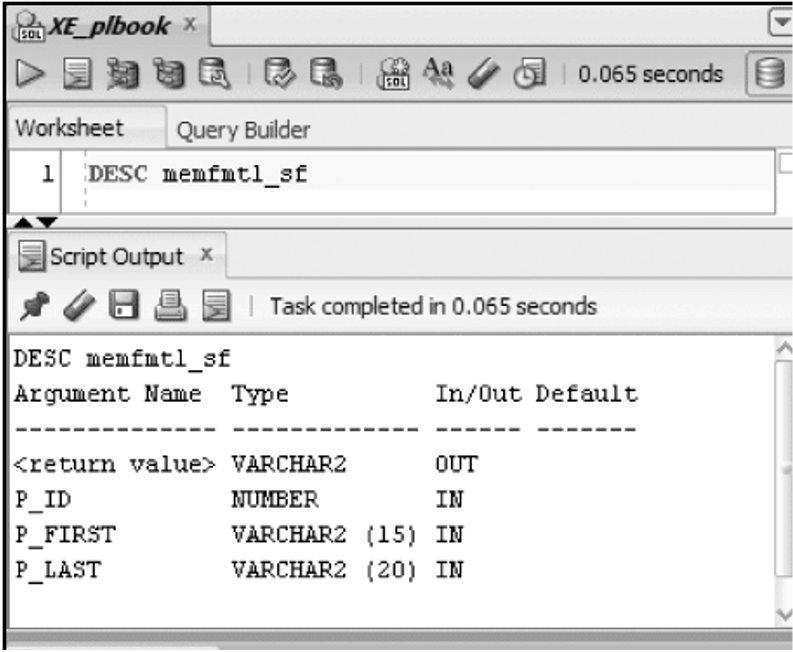
View source code using USER_SOURCE:
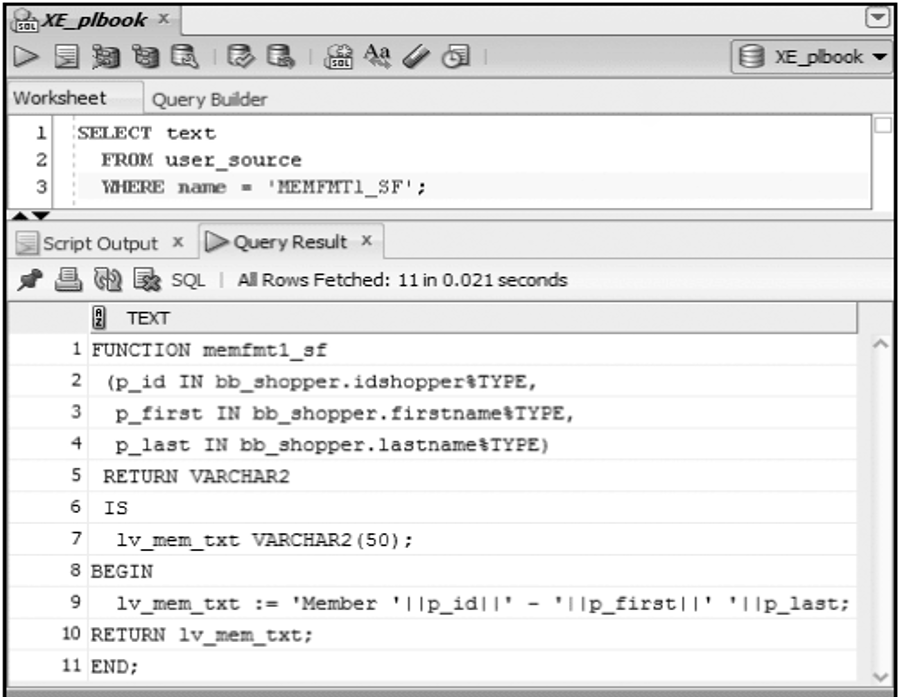
Delete Functions
DROP FUNCTION function_name;
Summary
- Functions can be used in PL/SQL and SQL statements
- A function is part of an expression
- Functions include parameters and must return a value
- OUT parameter rarely used
- Pass parameter values by value or reference
- Multiple RETURN statements can be included and only one is executed
-
- Actual versus formal parameters
-
- Formal parameters – included in a program unit
-
- Actual parameters – arguments used in a program unit call
- Purity levels refer to rules for functions to be used in SQL statements
- Options are available for improving performance such as PARALLEL_ENABLE
- DESCRIBE and USER_SOURCE view
- DROP command removed a function

Leave a comment